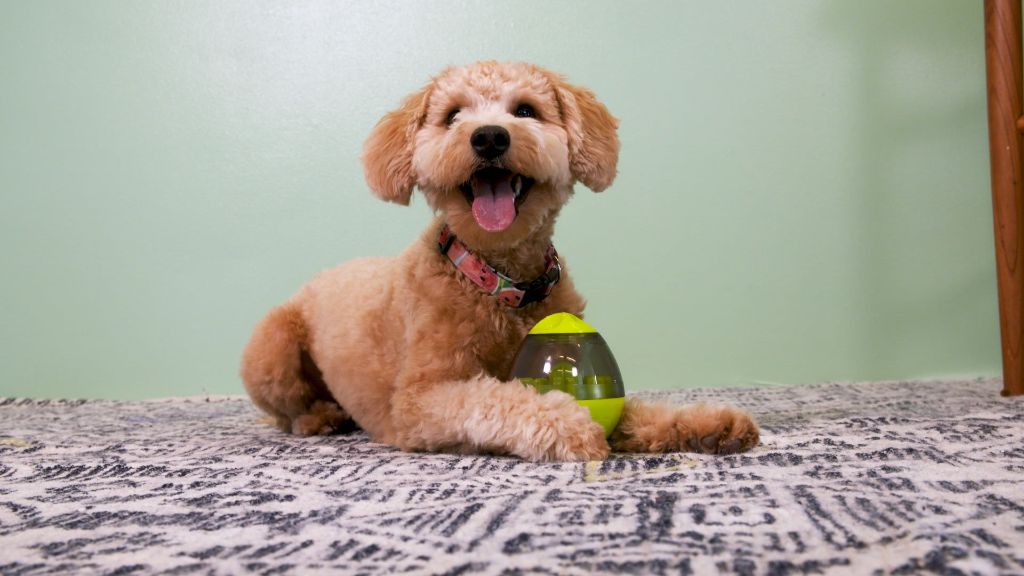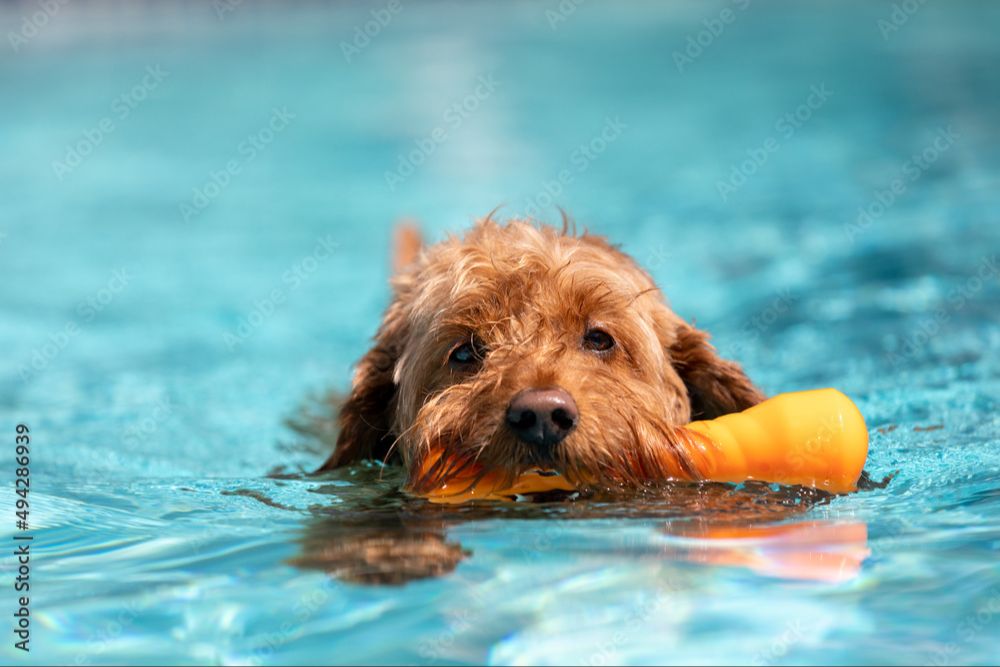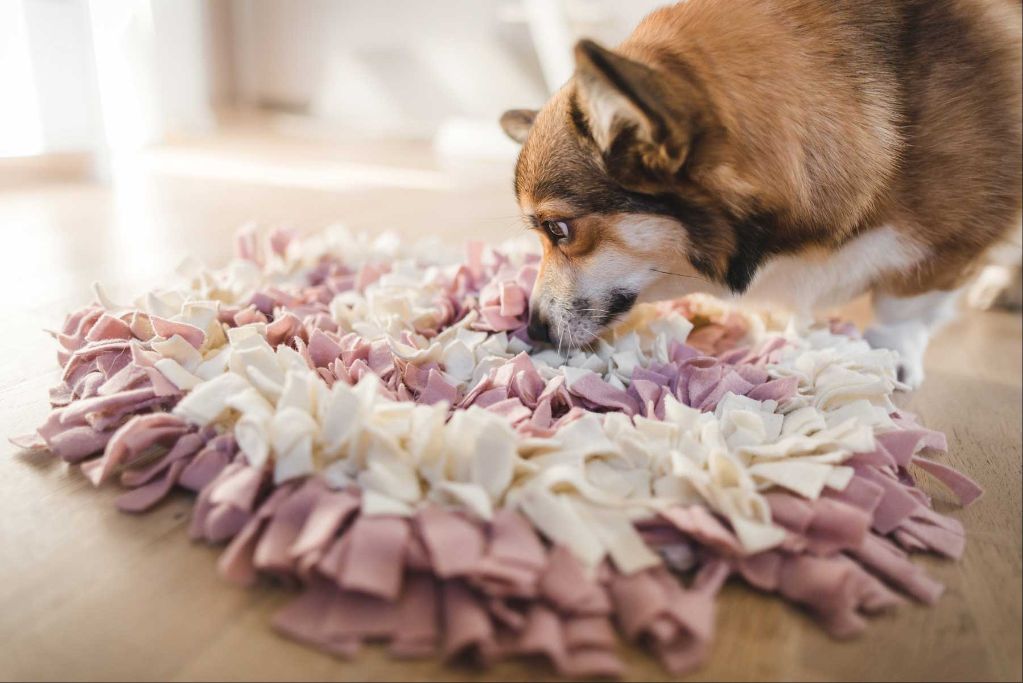Introduction
It’s important to exercise and entertain dogs both physically and mentally. Providing regular physical and mental stimulation offers many benefits for your dog’s health and happiness.
Physical exercise helps keep your dog in shape, burns energy, and prevents obesity and related health issues. Mental stimulation exercises your dog’s brain through training, games, toys, and activities. This helps prevent boredom and destructive behaviors.
Research shows that mental stimulation lowers aggression and hyperactivity in dogs. It also reduces anxiety and symptoms of depression. Overall, mental and physical activities keep your dog engaged, challenged, and entertained.
This article provides tips to keep your dog physically active and mentally stimulated for hours of fun.
Provide Interactive Toys
One of the best ways to keep your dog entertained is by providing interactive toys that stimulate their mind and body. Puzzle toys require dogs to manipulate the toy in different ways to earn a food reward. These toys provide mental stimulation by making dogs problem solve. According to Rover, classic examples of puzzle toys include snuffle mats, which hide treats in strands of fabric for dogs to sniff out.
Treat dispensing toys are another great option to entertain dogs. These toys make getting treats an active experience that engages your dog’s natural foraging instincts. There are many treat dispensing toys on the market, including ball and cube shaped toys with holes that randomly dispense treats as dogs play with them. Durable chew toys can also provide hours of entertainment for dogs. Make sure to select chew toys that are the appropriate size and strength level for your dog.

The key is choosing several interactive toys that engage your dog’s senses and match their playing style preferences. Rotate different toys to keep things exciting and refreshing for your dog. Interactive toys provide mental enrichment, satisfy chewing instincts, and release energy, keeping your dog happily entertained.
Play Fetch
Playing fetch is a great way to provide your dog with much needed physical exercise (The Benefits of Interactive Fetch Play with Your Dog). Different types of toys like balls, frisbees, or sticks can make fetch more interesting and engaging. The repetitive motion of fetching helps strengthen your dog’s muscles, improves cardiovascular health, and releases excess energy (The 7 Benefits of Interactive Fetch Play with Your Dog). Varying the distance and direction you throw the toy challenges your dog physically and mentally. Taking your dog to a field or open space allows them to run freely and burn more energy. Extending fetch sessions or playing multiple times a day ensures your dog gets sufficient physical activity.
Take Your Dog Swimming
Swimming is a fun and healthy activity for dogs that provides great exercise. However, safety should be your top priority. Not all dogs are natural swimmers, so you may need to ease your dog into the water slowly or provide a dog life jacket for added buoyancy and reassurance. Only allow your dog to swim where it is safe – avoid areas with strong currents or that allow access to deep water unless your dog is under your direct supervision.
According to the experts at Top Dog Health, swimming provides many benefits for dogs [1] including:

- Full body aerobic workout
- Improved cardiovascular health
- Increased muscle strength and endurance
- Weight loss and management
- Improved joint flexibility and range of motion
- Reduced risk of injury compared to land-based activities
The impact-absorbing properties of water make swimming an ideal exercise option for overweight dogs or dogs with joint issues, mobility limitations, or injuries. Always monitor your dog closely when swimming and allow adequate rest time between swimming sessions to prevent overexertion.
Go on Walks
Going on regular walks is a great way to provide physical and mental stimulation for your dog. Walks allow dogs to get exercise, explore new sights and smells, and bond with their owner.
For on-leash walks, be sure to use a properly fitted harness or collar to keep your dog safe and secure. Vary your walking route to introduce new scenery and smells. If your dog is well-behaved off-leash, you can allow them to roam and sniff around a dog park or hiking trail. Always obey leash laws and be aware of your surroundings.
Aim for at least 20-30 minutes of walking per day. Puppies, older dogs, and breeds like Greyhounds may need less exercise. Higher energy dogs like Labradors can benefit from longer walks or multiple walks per day. If your schedule permits, break walks into two or more sessions.
Make walks more engaging by bringing toys and treats or stopping for short training sessions. Allow your dog ample sniffing time, as this provides mental stimulation. Ensure proper leash etiquette if walking in public areas.
Train Your Dog
Training your dog is a great way to provide mental stimulation. Teaching your dog basic commands, tricks, and agility exercises will challenge their mind and provide the mental enrichment they crave.
Start with the basic commands like sit, stay, come, lie down, and heel. Practice these commands daily to reinforce the training. You can make training sessions more challenging by practicing commands in new locations with more distractions around.
Teach your dog fun tricks like spin, roll over, play dead, and shake. Tricks are a great way to bond with your dog while providing mental stimulation. Start with easy tricks and work up to more complex behaviors using positive reinforcement techniques.
Agility training requires dogs to complete an obstacle course and follow their handler’s cues. It provides physical and mental exercise as dogs navigate ramps, tunnels, weave poles, and other challenges. Look for local agility classes or create an obstacle course in your backyard.
Regular training strengthens the bond with your dog and provides much-needed mental enrichment. Keep training sessions short, positive, and fun. Give your dog plenty of praise and rewards for a job well done. A mentally stimulated dog is a happy, well-behaved dog.
Provide Food Puzzles
Puzzle feeders are a great way to provide mental stimulation for your dog while they eat. Making them work for their food engages their mind and keeps them entertained. There are many commercially available puzzle feeders like the Kong Wobbler, Trixie Activity Flip Board, and the Nina Ottosson puzzle toys. These products have various compartments and sliding doors that the dog has to navigate to get the food out (1). These types of toys can prolong mealtimes, prevent overeating, and provide enrichment for your dog.
You can also make DIY food puzzles at home using household items. An easy puzzle can be created by putting kibble inside a plastic bottle or cardboard tube, and letting your dog figure out how to get the food out. Other ideas include hiding kibble under plastic cups, putting treats inside a muffin tin, or freezing kibble inside an ice cube tray (2). Get creative and adjust the difficulty depending on your dog’s skills. Puzzle feeders are a great way to keep your dog entertained and engaged during meal time.

(1) https://www.petcircle.com.au/discover/benefits-of-puzzle-feeders
(2) https://be.chewy.com/dog-puzzle-toys-benefits/
Play Hide and Seek
Playing hide-and-seek with your dog provides great mental stimulation by engaging their mind and allowing them to use their keen sense of smell. You can play this game inside or outside, and use treats or toys to motivate your dog.
Inside, you can have your dog sit and stay, then go hide treats or toys around the house. Release your dog to go find them, using commands like “go find it!” to get them searching. Start with easy spots at first, then increase the difficulty by hiding items under blankets or in harder to reach spots. You can even teach commands like “cold” or “hot” to give clues as your dog searches.
Outside, have your dog wait while you go hide a favorite toy in the yard. Encourage them to “go find it!” using their nose. Make it more challenging by hiding treats or toys in bushes, under patio furniture, or even burying items in the dirt or snow.

No matter where you play, mix up hiding spots often so your dog doesn’t get bored. You can also increase difficulty over time by using longer stays, more complex environments, or multiple search items. Just be sure to keep it fun with praise and celebrate when your dog locates the hidden treasure!
Sources:
https://www.petmd.com/dog/general-health/ways-to-keep-dog-mentally-stimulated
Schedule Play Dates
Scheduling regular play dates with other dogs is a great way to provide mental and physical stimulation for your dog. Interacting with other dogs allows your pet to socialize and learn proper communication and play skills. According to this article, socializing your dog will lead to a happier and better behaved pup. There are several good options for social play time:
Dog Parks: Take your dog to a local dog park where they can interact with other dogs in a safe, fenced environment. Make sure your dog is up to date on vaccinations before visiting dog parks.
Friends’ Dogs: Set up play dates with friends who have dogs. This allows your dog to socialize with familiar dogs they already know.
Daycare: Doggy daycares offer supervised playtime and socialization for dogs during the day. According to this source, playing with other dogs provides a great workout and helps build confidence.
Try to schedule regular social playtime a few times per week if possible. Social interaction is healthy and enriching for dogs. Just be sure any playmates are properly vaccinated and well-supervised during play dates.
Try Nosework
Nosework is a great way to provide mental stimulation for your dog. There are different types of nosework you can try at home. One type involves hiding treats around the house and having your dog search for them using their powerful sense of smell. You can start with easy hides and increase the difficulty over time. This provides mental challenge as your dog has to problem solve to find the treats.
Another option is using scent kits that contain essential oils. You put a few drops of oil on a cotton ball and hide it. Then your dog searches for the scent. This activates the olfactory part of their brain as they have to filter through all the ambient smells to pinpoint the target odor. According to research from Science Says: “Nose Work is Good for Your Dog!”, nosework provides cognitive enrichment and mental stimulation for dogs.
You can also join a nosework class or club. This provides structure and progression as dogs advance through different elements like container search, exterior search, and buried search. Your dog will enjoy bonding with you and being mentally challenged.
